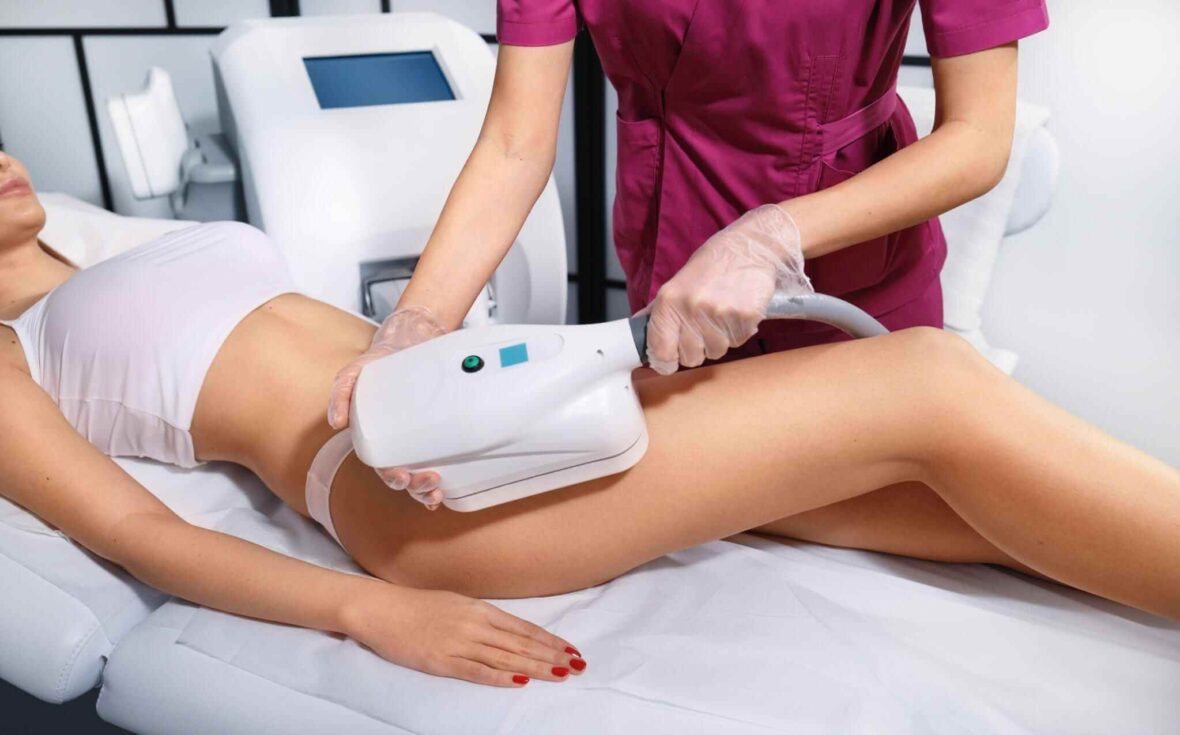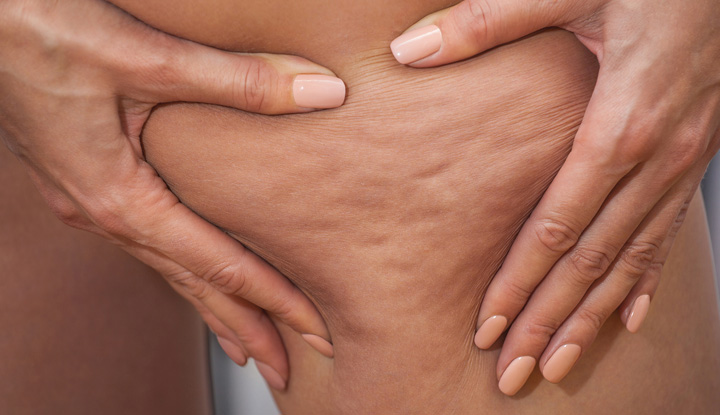Cellulite on legs is a common occurrence, and it is often caused by the structure and distribution of fat in the body. Women are more likely to develop cellulite than men, and it is most commonly found on the thighs and buttocks. Cellulite occurs when fat deposits beneath the skin push up against connective tissue, causing a dimpled or lumpy appearance.
In women, the connective tissue is arranged vertically, which allows fat to push up and create the appearance of cellulite. Additionally, women tend to have a higher proportion of body fat than men, which can contribute to the development of cellulite on legs.
Other factors that can contribute to the development of cellulite in the legs include poor circulation, a lack of exercise, and a diet high in processed and sugary foods. Genetics can also play a role in the development of cellulite, as certain genetic traits may predispose some individuals to have a higher likelihood of developing cellulite.
While cellulite can be frustrating and impact self-confidence, it is a normal and common condition that does not necessarily indicate poor health. That being said, there are several lifestyle changes that can help reduce the appearance of cellulite, such as regular exercise, a healthy diet, hydration, and stress management.
In some cases, professional treatments may also be effective at reducing the appearance of cellulite on the legs. In addition to the factors mentioned earlier, there are several other factors that can contribute to the development of cellulite in the legs. Here are a few more:
Image source: https://my.clevelandclinic.org/
1. Hormonal Changes:
Hormonal changes can impact the distribution of fat in the body and contribute to the development of cellulite. Changes in estrogen levels, for example, can lead to a reduction in collagen production and weaken connective tissue, which can contribute to the development of cellulite.
2. Aging:
As we age, our skin loses elasticity, which can contribute to the development of cellulite. Additionally, changes in hormonal levels and a decrease in physical activity levels can also contribute to the development of cellulite.
3. Smoking:
Smoking can contribute to the development of cellulite by reducing blood flow and weakening connective tissue. Additionally, smoking can damage the skin and lead to premature aging, which can exacerbate the appearance of cellulite.
4. Tight Clothing:
Wearing tight clothing can restrict blood flow and contribute to the development of cellulite by compressing the skin and connective tissue.
5. Stress:
Stress can contribute to the development of cellulite by increasing levels of the hormone cortisol, which can lead to a decrease in collagen production and weaken connective tissue.
While the development of cellulite can be influenced by many factors, there are several lifestyle changes that can help reduce the appearance of cellulite on the legs. By incorporating regular exercise, a healthy diet, and stress management techniques into your routine, you can improve circulation, build muscle, and improve skin elasticity, which can help reduce the appearance of cellulite.
There are several professional treatments that may help reduce the appearance of cellulite. However, it’s important to keep in mind that there is no one-size-fits-all treatment, and the effectiveness of each treatment may vary depending on individual factors such as the severity of cellulite and skin type. Here are some advanced aesthetics treatments that may be recommended:
- Cellulite Massage: Cellulite massage is a non-invasive treatment that uses a combination of massage techniques to improve circulation, reduce fluid retention, and break down fat deposits beneath the skin consequently, diminishing cellulite on the calves and legs in general.
- Radiofrequency Therapy: Radiofrequency therapy uses heat to stimulate collagen production and improve skin elasticity, which can help reduce the appearance of cellulite.
- Laser Therapy: Laser therapy uses laser energy to break down fat deposits and stimulate collagen production, which can help improve skin texture and reduce the appearance of cellulite.
- Subcision: Subcision is a minimally invasive treatment that involves using a needle to release the fibrous bands beneath the skin that contribute to the appearance of cellulite.
- Liposuction: Liposuction is a surgical procedure that involves removing fat deposits from beneath the skin. While liposuction can help reduce the appearance of cellulite, it is a more invasive treatment and may be associated with more risks and longer recovery time.
- Endermologie: Endermologie is a non-invasive treatment that involves using a handheld device that uses suction and massage to improve circulation and break down fat deposits.
- Acoustic Wave Therapy: Acoustic wave therapy uses sound waves to stimulate collagen production and improve blood flow, which can help reduce the appearance of cellulite.
- Mesotherapy: Mesotherapy involves injecting a mixture of vitamins, minerals, and medications directly into the skin to help break down fat deposits and improve circulation.
- Carboxytherapy: Carboxytherapy involves injecting carbon dioxide gas beneath the skin to stimulate blood flow and collagen production, which can help reduce the appearance of cellulite.
- Ultrasonic Cavitation: Ultrasonic cavitation uses ultrasound energy to break down fat deposits beneath the skin, which are then eliminated by the body’s natural processes.
Speak with a healthcare professional to determine which professional treatment may be best for you, as well as to discuss the potential risks and benefits of each treatment.
It’s also important to note that professional treatments are most effective when combined with a healthy lifestyle that includes regular exercise, a healthy diet, and stress management.
Conclusion
Keep in mind that while professional treatments can help reduce the appearance of cellulite, they are often more expensive and may require multiple sessions to see results. Additionally, the effectiveness of each treatment may vary depending on individual factors such as skin type, the severity of cellulite, and overall health.
It’s always a good idea to speak with a healthcare professional to determine which treatment may be best for you and to discuss potential risks and benefits.





